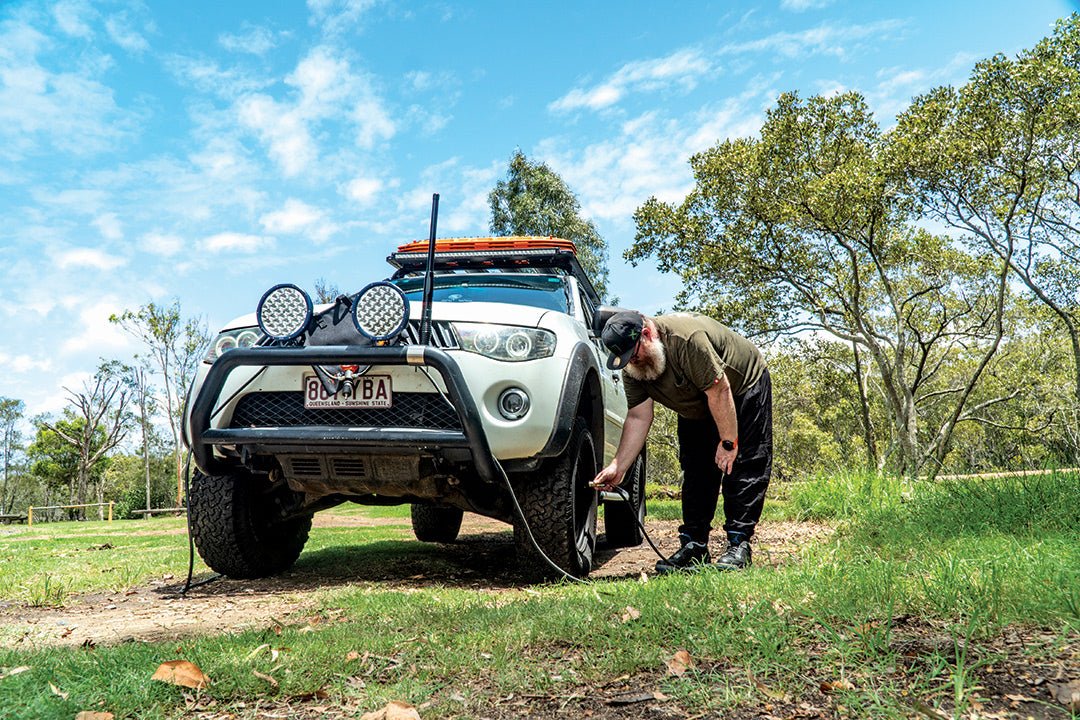

In our previous article we covered all the basics of safe towing (check it out here if you missed it). For extra peace of mind when out with your van or trailer, here are some of the towing gear essentials that can enhance your towing experience and overall safety.
Tow mirrors
Towing mirrors come in all shapes and sizes, but all serve the same purpose: to extend your side mirror visibility so you can see your entire van.
One of the common misunderstandings about towing mirrors is whether or not they are a legal requirement. The answer is technically no, but it is a legal requirement that drivers have a clear line of visibility down the side of their tow vehicle and van or trailer, as demonstrated in the below diagram. If you’ve got a compact or narrow van, then your towing vehicle’s side mirrors might be acceptable, but in many cases towing mirrors are required.
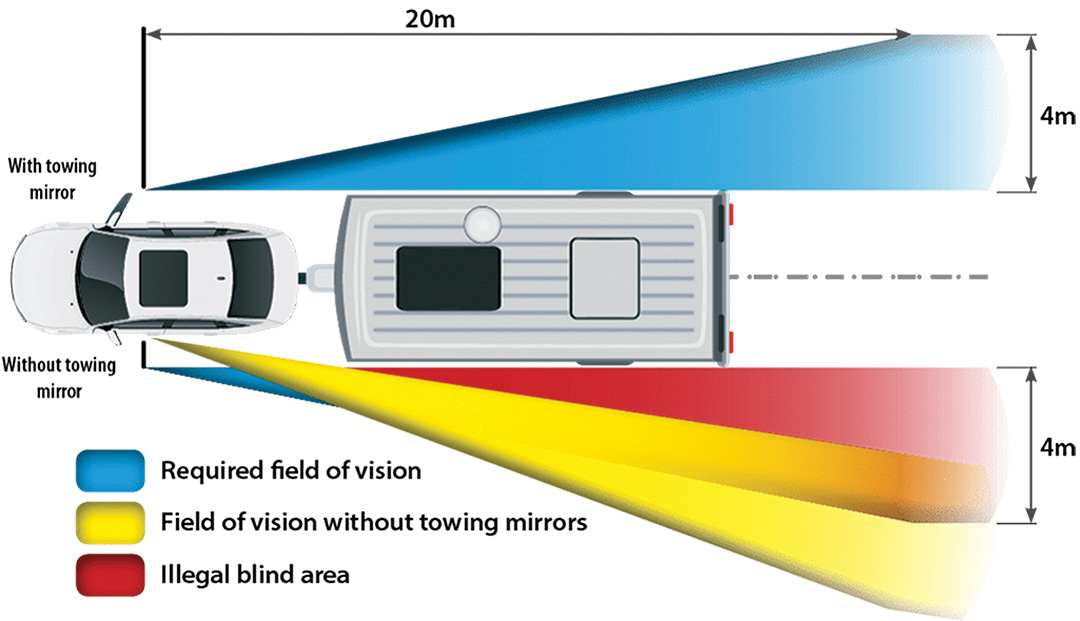
We’ve showcased the MSA 4x4 Tow Mirrors a number of times in Caravan World (check out John Ford’s review in issue 636 or online here). These tow mirrors replace your vehicle’s standard side mirrors and provide you with a permanent visibility solution. They’ve also been designed to connect to your vehicle’s existing wiring harness so that you have full functionality when adjusting the mirror angle to your desired position using the internal controller. While they do require installation, you won’t have to worry about losing them while travelling. These mirrors are made for specific vehicle models, so head to the MSA 4x4 Accessories website for further information and pricing.
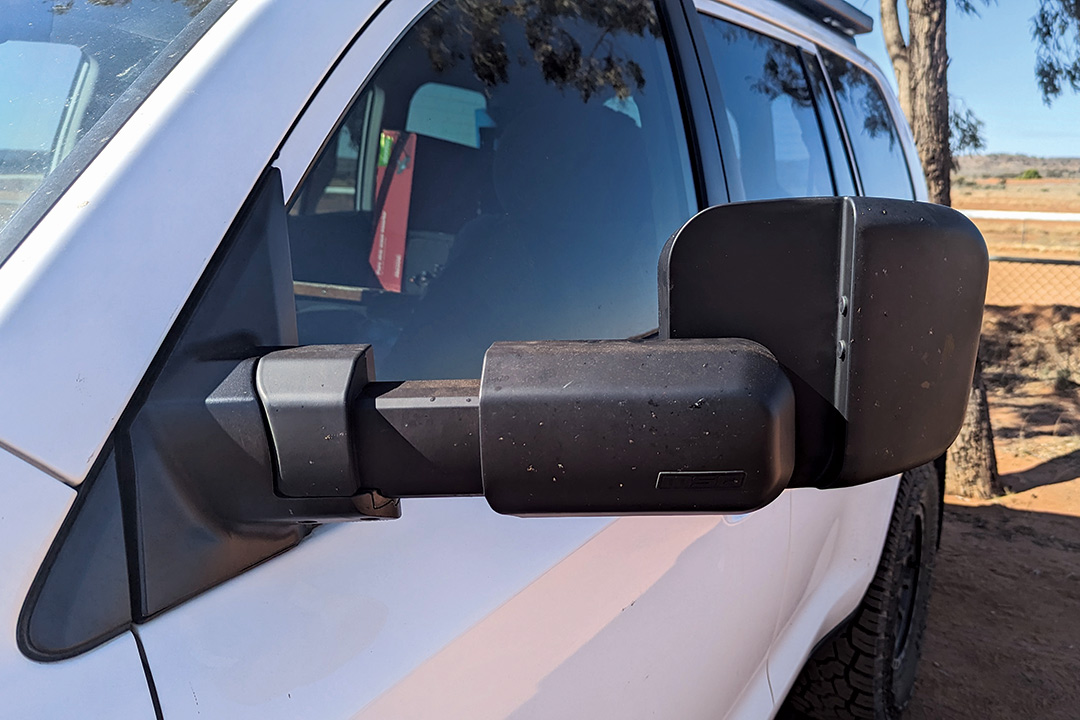 Extended and folded flat (Image John Ford)
Extended and folded flat (Image John Ford)
For a less permanent installation, the Milenco tow mirrors are a good option. We keep a handful of these around for our events, and they’re a compact bit of gear that can be easily stowed away when not in use and are simple to fasten to your existing side mirrors to provide a broader angle of visibility. Fitted correctly and done up tight we have never lost a mirror on our many tow tests.
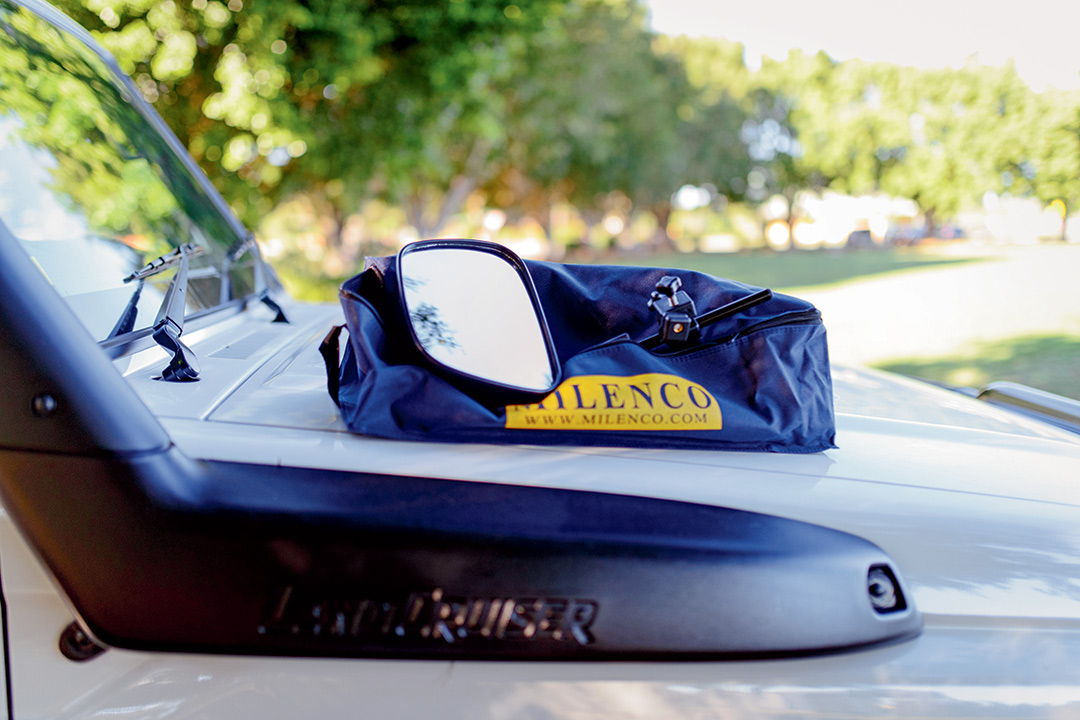
When using removable towing mirrors, it’s worthwhile having a spare set with you, even if it’s a cheaper backup. It may save you if you happen to lose a mirror while driving if not secured tightly or they disappear while you’re parked somewhere.
Rearview cameras for towing
Rearview cameras are another great way achieve better visibility when towing, and especially when reversing. Fitted to the rear of your van, these devices will provide a wide-angle view behind your van, eliminating blind spots and making reversing into caravan sites or tight areas much easier, and is a huge safety advantage when you don't have a spotter with you.
Some devices can be used while driving, allowing you to maintain visibility of any traffic behind you. However, please note that rearview cameras are not an accepted replacement for towing mirrors should the size of your van require them.
It’s becoming somewhat more common for newer vans to offer rearview cameras as standard or an optional inclusion, but for those who don’t already have one, there are plenty of options out there.
Safety Dave is an Australian owned company operating out of Melbourne and has a wide range of reversing cameras specifically designed for caravans. There’s different screen sizes and mounting options available, ensuring caravanners can find one to suit their requirements. (Head to the Safety Dave website for more information)
The Hema Wi-Fi Reversing Camera is another good option, and one that Caravan World editor John Ford fitted to his LandCruiser 200 Series and Trakmaster van setup last year for his trip to WA. This system does require a HX2 GPS device to display the camera feed, but the camera itself is wireless with built in wi-fi connectivity, so there’s no additional wires to worry about, and it offers a clear view out the back of the van for driving and reversing.
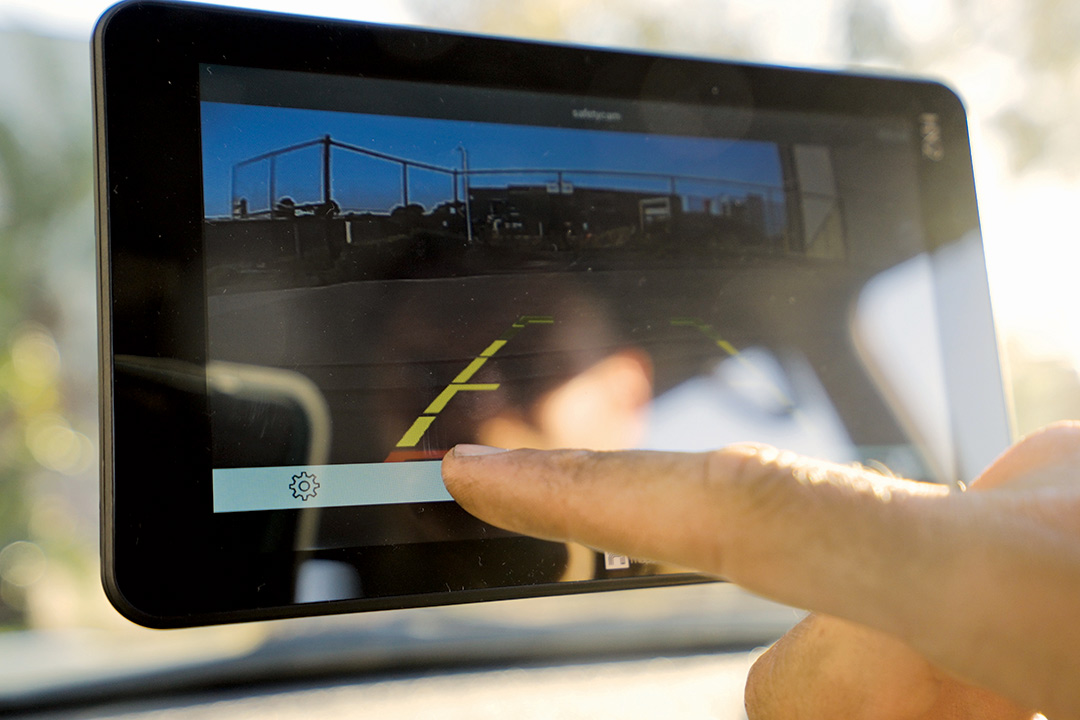
Portable tyre pumps
Tyre pressure plays an important role in ensuring you have full control on the road. Incorrect pressure can impact your tyre health, minimise grip on the road, decrease fuel efficiency and more. Most fuel stations will have air pumps available, but it’s a good idea to have a portable tyre pump and a quality pressure gauge in your towing gear kit. It will allow you to conveniently check and adjust your tyre pressure no matter where you are and keep them at the recommended level for your towing setup and the tracks you’re driving on.
Underinflated tyres can cause poor handling, braking and acceleration — often described as a sluggish or doughy feel when driving. It will also increase tyre wear (particularly around the outer sections) and a higher risk of tyre failure.
Overinflated tyres bulge, which creates a narrow band on the tyre that becomes the main point of contact with the road. This distorted shape can decrease your traction while driving and will also put extra weight on a reduced surface, leading to uneven wearing. The high pressure can also make the tyre more susceptible to punctures from sharp objects.
You can find portable tyre pumps in any camping or outdoor adventure stores as well as online. There are plenty to choose from, ranging from basic through to high-tech.
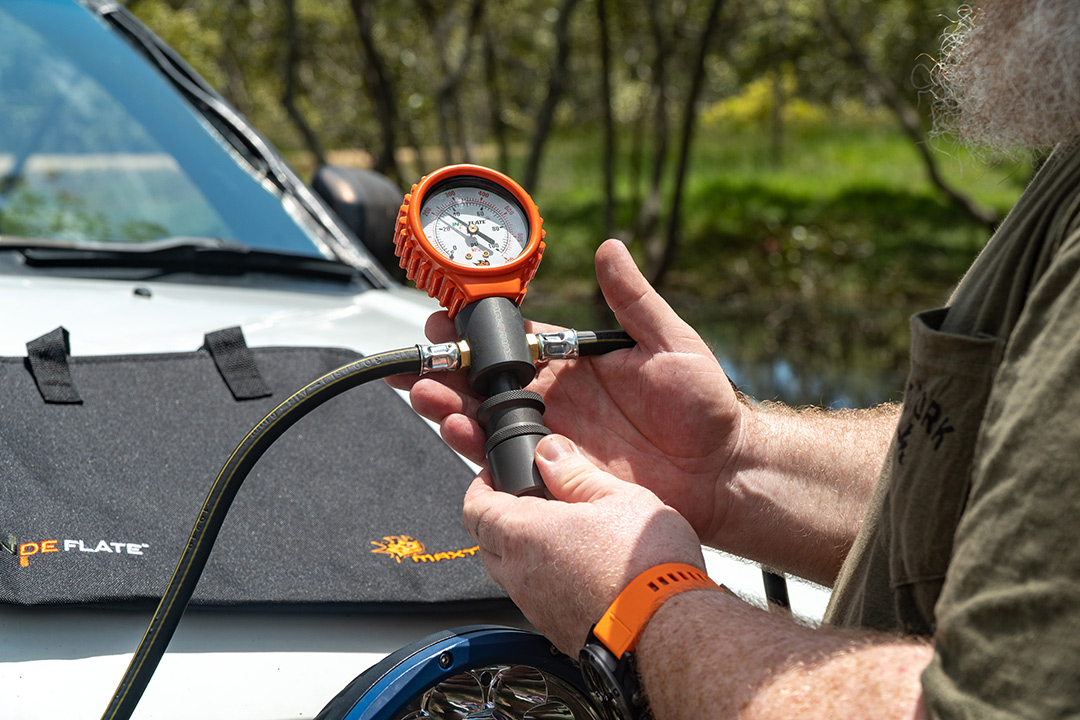 (Image Anna Shepherd)
(Image Anna Shepherd)
MAXTRAX is an Aussie brand that made its name designing top quality recovery gear, which includes four different tyre pumps, all of which feature MAXTRAX’s patented dump-valve mechanism that allows them to have two or four hoses (depending on the chosen model) and combination pressure gauges to simultaneously inflate, deflate and equalise tyre pressures. There is also the choice between analogue or digital gauges.
For something simpler, the Saber Tyre Deflator is a good option.
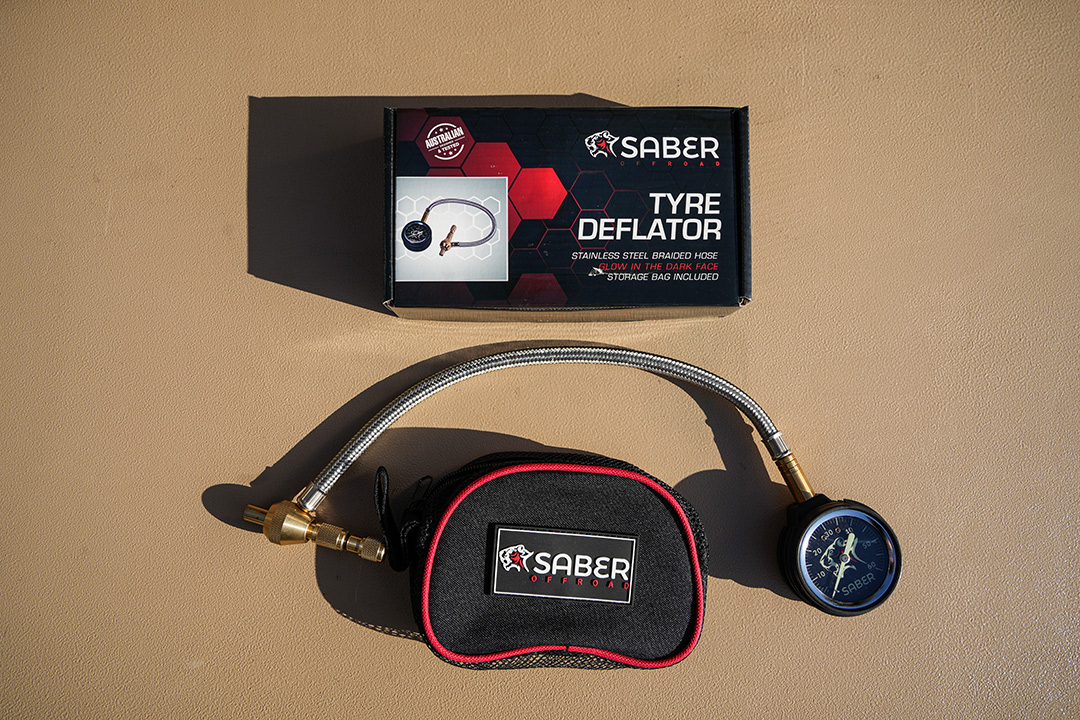 (Image Josh Hanger)
(Image Josh Hanger)
Tyre pressure monitoring system
Tyre pressure monitoring systems (TPMS) go a step further in helping you maintain the optimum tyre pressure and temperature for your tow vehicle and van, and thus improve your safety on the road. It is becoming more common for new vehicles and caravans to come with TPMS installed as standard or as an optional inclusion. Built in TPMS systems will display the readings on your vehicle’s dash, but if you are adding a unit to your existing setup you will need to find one that comes with a display unit, such as the Oricom TPS10 Real Time Tyre Pressure Monitoring System.
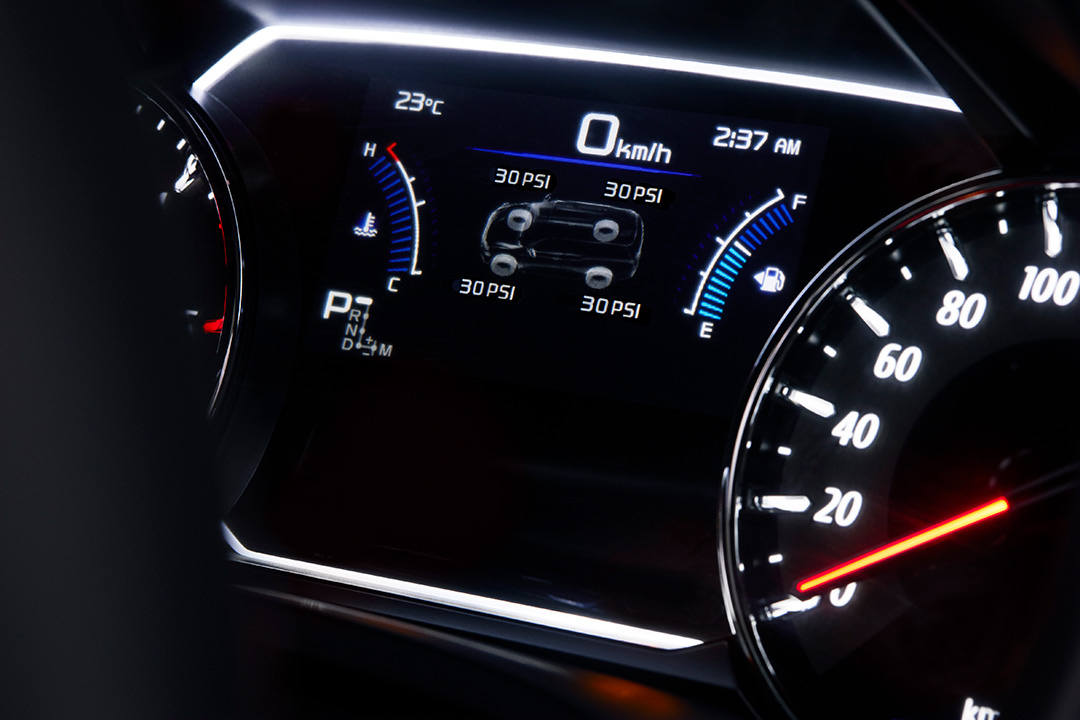
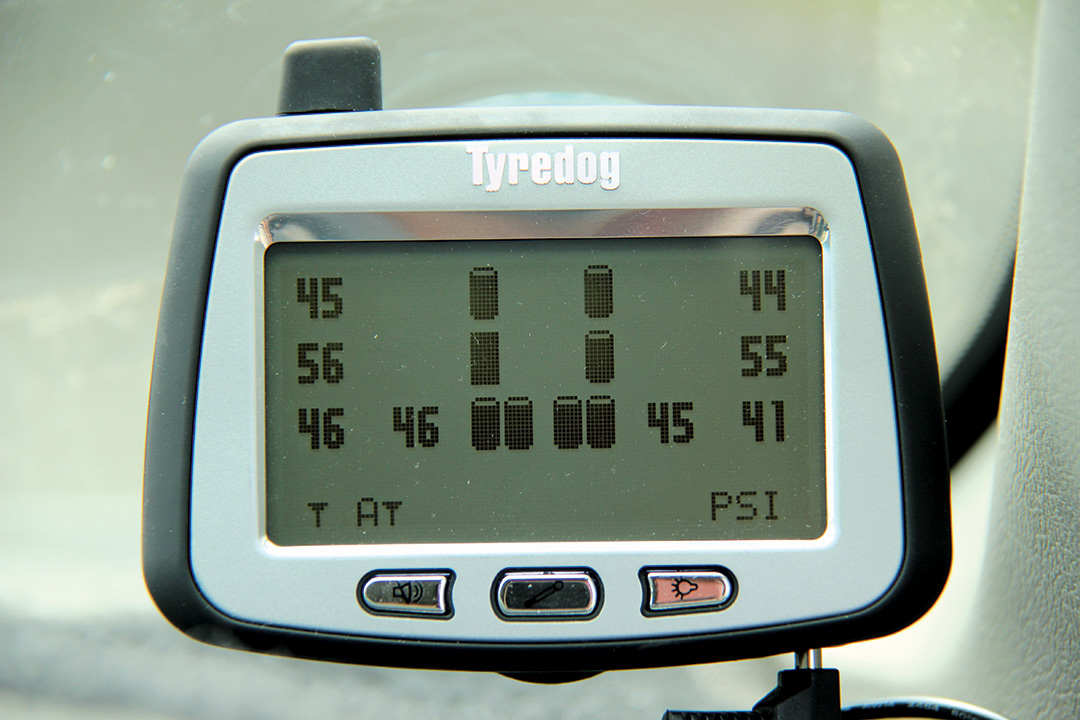
There are various kinds of TPMS units available, but the most common types available will provide a display unit that wirelessly connects to several tyre sensors that will monitor the pressure and temperature of each individual wheel while driving, and alert you of any changes.
Tyre repair kit
Getting a flat tyre and not having the gear to change and repair it can make a trip go from bad to worse. Having a tyre repair kit onboard (and knowing how to use it) can make sure you can get back on the road and to a tyre repair professional who can check it over or replace the tyre if needed.
 (Image Josh Hanger)
(Image Josh Hanger)
There are plenty of tyre repair kits available on the market, but the essential items it should include are:
- Pliers — to remove the cause of the puncture
- Reamer — to clear the puncture site and prepare the area for the repair plugs
- Lubricant — to make using the reamer easier
- Cord-insertion tool — to insert the repair cord into the puncture
- Repair cords (or tyre plugs) — these are thick spongy cords that are inserted into the puncture to fill the space so that the tyre is safe to drive on until it can be professionally repaired or replaced
Having hex keys, a knife, pressure gauge, wheel chocks, gloves and a blanket or tarp can also make your life easier.
Most repair kits, such as the ones by Bushranger 4x4 and Saber Offroad, will come with a hard case and all the basic repair items included.
Hot tip: Make sure you check the air pressure the next morning after the repair to make sure the plug is holding, and don’t forget to take the tyre to a professional at your earliest convenience.
Recovery gear
Recovery gear is something you never want to need but should always have onboard. No matter where you’re travelling, it’s essential you have the tools you need to get out of a tricky situation, and who knows, you might be able to help someone else on the road.
Recovery gear products can be purchased individually, but if you want to make it easy, pick up a ready-made kit which often comes with a carry bag to keep all the items organised and ready to go. Saber Offroad, MAXTRAX and Factor 55 all have comprehensive kits available.
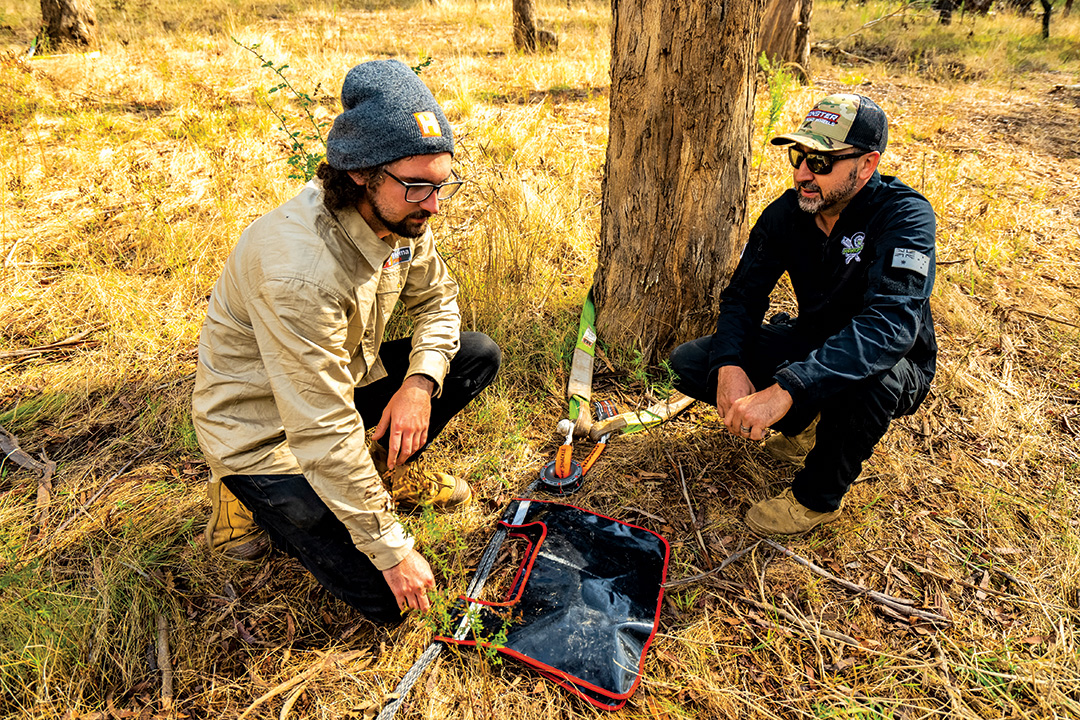 The Hema Map Patrol team testing out some new recovery gear (Image Anna Shepherd)
The Hema Map Patrol team testing out some new recovery gear (Image Anna Shepherd)
Some crucial components that should be included in your recovery gear setup are:
- Kinetic recovery rope
- Shackle
- Soft shackle
- Utility rope
- Recovery ring
- Winch hook
- Winch damper
- Recovery gloves
- Wheel chocks
- Recovery boards (such as those by MAXTRAX and GoTreads)
- Tarp or blanket
- First aid kit
For obvious safety reasons, having a good first aid kit is an absolute must — even when you don’t have a van in tow. And adding a snake bite kit to the mix would be a worthwhile addition as well. Stow both kits somewhere easy to reach, make sure all passengers know where they are, and that everyone knows what there is and how to use it.
SURVIVAL Emergency Products has a great range of kits available, including standard first aid kits in various sizes, snake bite kits and pet first aid kits.
The SURVIVAL Vehicle First Aid Kit includes all the essential items you need and has a snake bite kit as well, while the SURVIVAL Boaties Bundle First Aid Kit has a great waterproof box to protect your kit from water and dust when on the road or on the water. John Ford recently got one of these, so keep your eye out for his upcoming review.
Communication devices
UHF radios are handy for communicating with fellow motorists, but if you’re travelling into remote parts of Australia where there is no mobile phone reception (which is a large percentage of the country), it’s a good idea to have a way to get in contact with family, friends and emergency services.
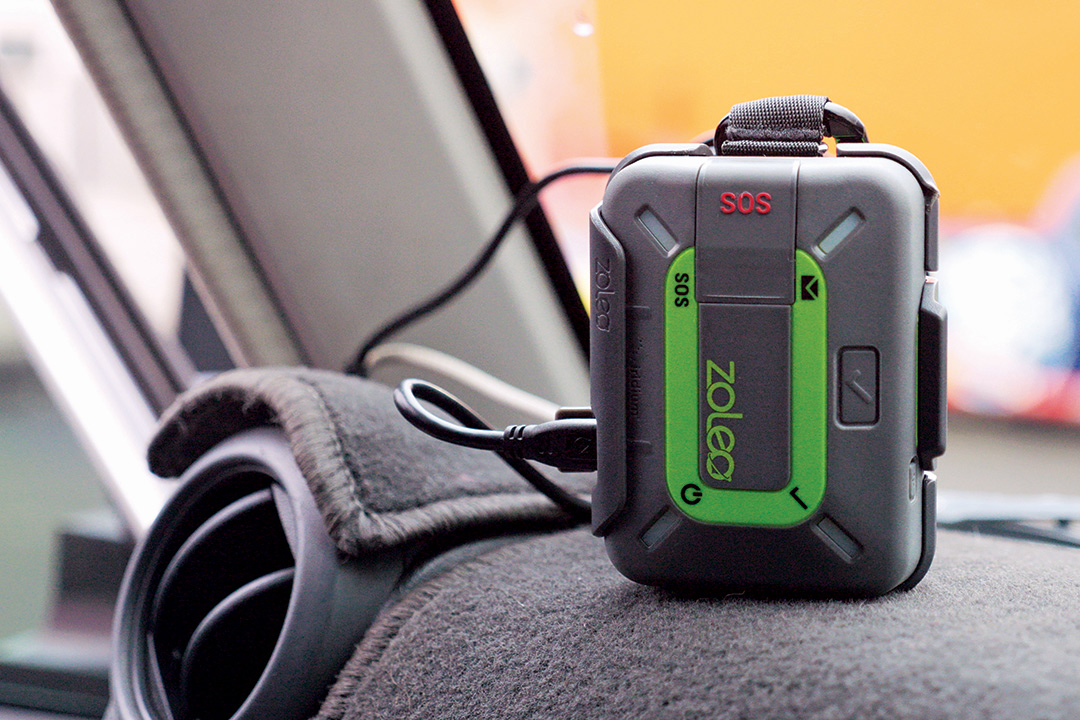
Starlink has become a gamechanger and offers reliable internet connection Australia-wide, meaning you can stay in touch with family and friends no matter where you go. But for emergencies, still consider getting a personal locator beacon (PLB) such as the ZOLEO and Garmin devices or a satellite phone (Iridium Satellite Communications has a wide range) which will be able to contact emergency services and, depending on the device, send GPS coordinates of your location.
Ready for anything
While not a piece of gear per se, worth a mention is making sure you have an emergency bag with three days’ worth of unperishable food and water for each passenger on board. This should be stored somewhere easy to access and near your first aid kit and PLB or satellite phone.
Every caravanner will have unique requirements for their towing setup, and many of them can change depending on the season, weather and destination. But these items should put you on firm footing for your next vanning adventure.
THE NEXT STEP
If you want to learn the latest caravan news, find the most innovative new caravans and camping gear or get inspired to plan your next adventure on the open road in the Aussie great outdoors, subscribe to our weekly newsletter. We promise to send you only the best content.
Related Articles:
Tow safe, tow smart | How to tow your caravan safely
How to stay connected while travelling Australia
Weight distribution hitches — what do they really do?
For step-by-step instructions on how to troubleshoot your caravan lights, click here.







